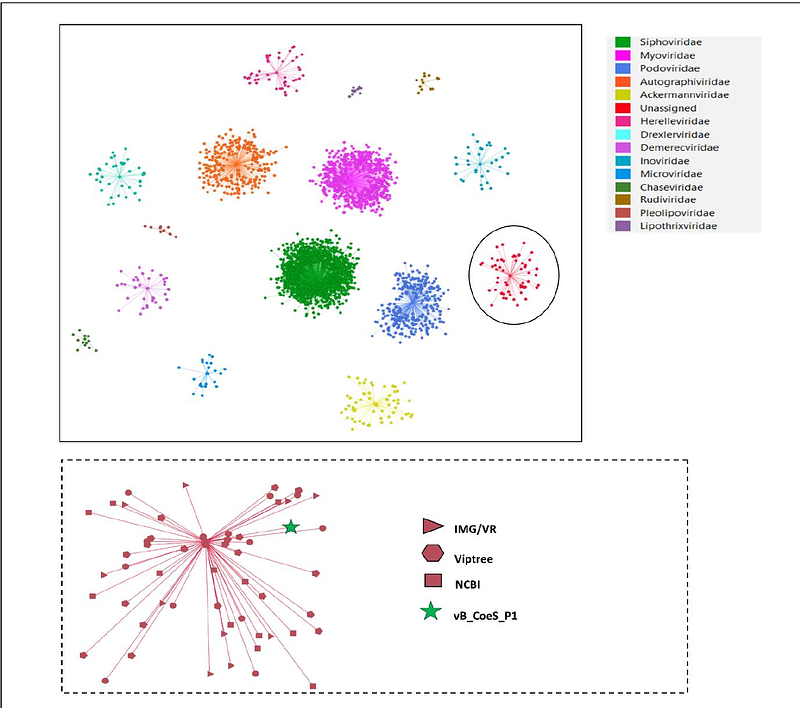Characterization and Genomic Analysis of vB_CoeS_P1, the First Vibrio hepatarius Phage, and Definition of the New Family Estovirdae

Characterization and Genomic Analysis of vB_CoeS_P1, the First Vibrio hepatarius Phage, and Definition of the New Family Estovirdae
PK, S.; Ammini, P.; Angia Sriram, P. R.
AbstractA novel bacteriophage vB_CoeS_P1, isolated in the surface waters of the Cochin estuary of Kerala, India, was identified as the first phage known to infect Vibrio hepatarius. Transmission electron microscopy analysis revealed that the phage had a myovirus morphotype with an icosahedral head and a long contractile tail. Characterization experiments show that the phage was stable across a temperature range of 4oC to 60oC, a pH of 4 to 12, and a salinity range of 0.5 % to 16%. One-step growth curve analysis revealed a burst size of 30 PFU/Cell and a latent period of 20 minutes. The phage contains a double-stranded DNA with 136,927 bp and 34.93% GC content. The NCBI Blastn analysis reveals that vB_CoeS_P1 exhibits very low sequence similarity (1% query coverage and 77.82% identity) with Vb_VpaM_R16F (OP793884.1). It has 265 predicted ORFs, among them 57 have putative functions with no tRNA, antibiotic encoding genes, and resistance encoding genes. Three putative auxiliary metabolic genes were identified, encoding pyrophosphohydrolase enzyme (ORF 75), PhoH-like phosphate starvation-inducible (ORF 34), and Endonuclease V N-glycosylase UV repair enzyme (ORF 248). Phylogenetic analysis of conversed genes revealed that vB_CoeS_P1 is clustered with Vb_VpaM_R16F but diverged into a distinct clade. Further whole genome proteomic tree analysis, comparative genome analysis using average nucleotide identity (ANI), and network analysis confirmed that vB_CoeS_P1 contains a unique genetic and evolutionary architecture. These findings support the proposal of a new bacteriophage family Estovirdae, within the Caudoviricetes class.